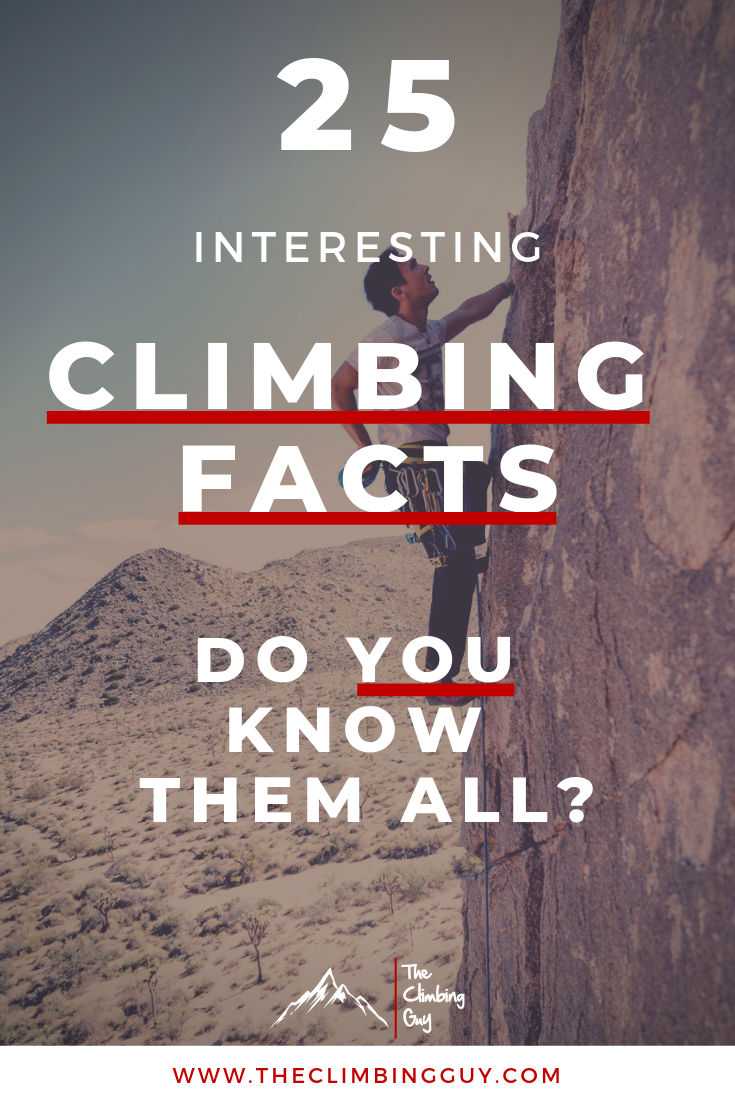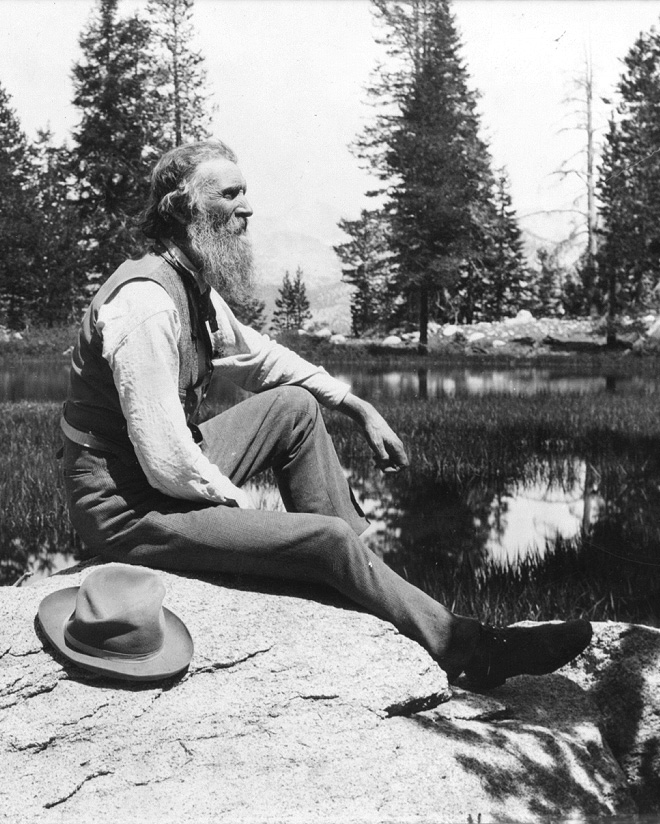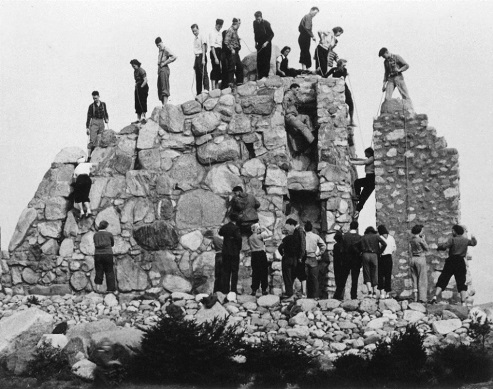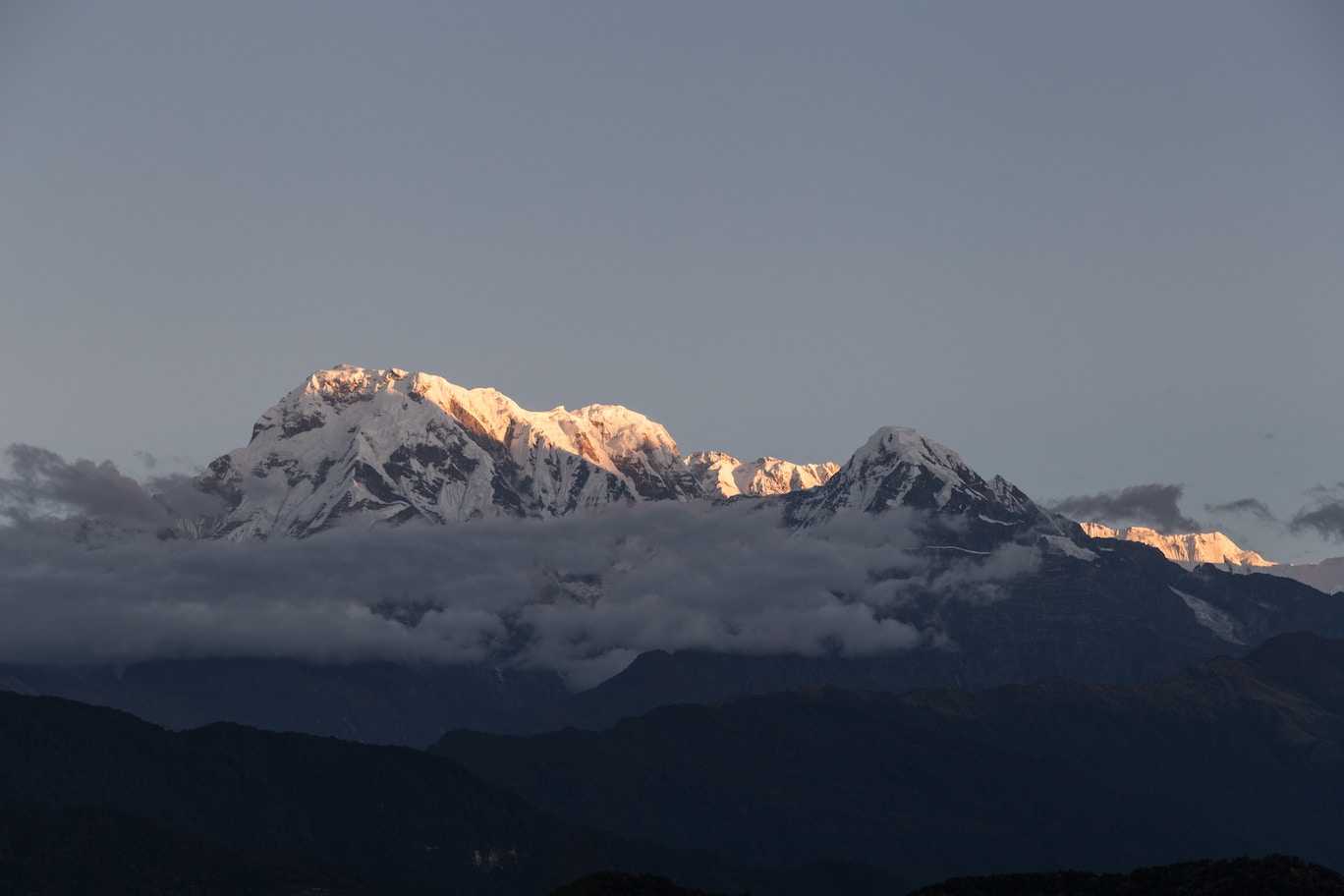We all love going climbing, but there’s also a lot of fun to be had learning about the sport as well.
We collected 25 fun and interesting facts about climbing spanning from the start of modern climbing, to the 2020 Olympics in Tokyo.
So, without further ado, let’s get into them.
- One of the first recorded climbs was in 1492, by Antoine de Ville, when ascending Mount Inaccessible, Mont Aiguille, a 300-meter rock tower south of Grenoble, France. Under orders from his king. He applied the techniques for sieging castles to attain the summit. The first actual pure rock climb, however, was in 1869 by John Muir, who did an on-sight, free solo ascent of Cathedral Park in Tuolumne Meadows, Yosemite national park.
- The tallest artificial climbing wall is owned by the BaseCamp Climbing Gym out in Reno, Nevada, USA. The wall measures 51.56 m tall, offering a climbable surface of 49.85 m, offering a range of climbing grades from an IFSC-certified 15-meter speed climb, to a two ledge, full height, multi-pitch climb. The BaseCamp wall is actually attached to a multi-story car park on the other side, meaning it’s not free standing.
- The tallest free-standing wall ever constructed was built at Banning Mills, Georgia on the 9th December 2011 and measured 41.89 meters.
- The hardest sport climb in the world is called Silence, in the Flatanger area of Norway. It has yet to receive a repeat, but Adam Ondra put a grade of 5.15d (9c) on the climb. This displaced the previously tied honour, which was split between Change, La Dura Dura, and Vasil Vasil which were graded at 5.15c (9b+).
- The best sport climber in the world at the moment has to Adam Ondra, and by some margin. Ondra has many 5.15 graded routes to his name and is putting them up at a rate that we’ve just not seen before, putting him well ahead of his contemporaries.
- The IFSC (International Federation of Sport Climbing), now has over 91 member federations, spread over 5 continents. With federations numbering 6 in Africa, 22 in Asia, 43 in Europe, 4 in Oceania and 16 in Pan-America.
- The IFSC reports that the average age of their registered climbers is 19 years old. This is based on the 2500 licenced athletes that have registered.
- Rock climbing can burn between anywhere from 500 to as much as 900 calories per hour. Not only that, but it can drive some great changes in your body composition, leading to more lean muscle mass.
- The first artificial wall known to have been created was the Schurman Rock. It was built outdoors, at Camp Long Scout Camp and was designed by Clark Schurman. It took Schurman a year to design the wall using clay and then a subsequent two years, between 1938 and 1940 to construct the finished project.
- A paper published by climbing injury researcher Volker Schöffl found that the rate of injury at a climbing wall in Germany was 0.02 per 1000 hours of climbing. When compared to other sports, this is actually quite low and is a similar number found by other studies
- PHIT America compiled a recent data set on sports participation, which found that 4.6 million people in the USA participated in some form of climbing, be it sport, bouldering or indoor, making it seventieth out of 111 activities. That’s more popular than gymnastics and track and field.
- Rock climbing is growing and fast, participation grew by 18,732 people between 2007 and 2014, but rocketed up by 148,287 between 2015 and 2015.
- The hardest boulder problem (Burden of dreams) was first climbed by Nalle Hukkataival in 2016 and was graded at 9A (V17). It hasn’t been repeated yet, so no one has yet to confirm the grade.
- Climbing will officially be included in the Summer Olympics of 2020, in Toyko Japan. The likely format will include sport climbing, bouldering and speed climbing. Qualifiers will be held in 2019, with some places granted to World Championship winners.
- The first artificial climbing wall was not created by Don Robinson as is often quoted, although he did create one of the early examples at Leicester University created in 1964. The first however was at stone wall created Ullswater School and was commissioned by the Cumberland Education Authority, which was finished in 1960.
- The most dangerous mountain is the formidable Annapurna, the 10th highest mountain measuring 8,091 m. It was first climbed by Maurice Herzog and Louis Lachenal, two Frenchman, but since then has claimed 69 lives out of only 261 attempted ascents, meaning for every three climbers that make it up and down, one will die.
- The hardest solo climb is a hard one to call, with a few contenders, Dave MacLeod soloed Darwin Dixit in Margalef, 8c some time ago, which is a remarkably hard grade, Alex Huber soloed Kommunist (5.14a) out in the Dolomites. But then contrast this with Alex Honnold’s solo of The Pheonix (5.13) a 130 ft crack climb, that is hundreds of feet up the wall or his recent solo of Freerider (5.13a) up the 3000ft wall of El Capitan captured in the film Free Solo, which whilst technically not as hard, the sustained nature and sheer height is quite remarkable.
- The tallest ice climbing wall is actually not that tall, measuring only 20 m and based in O2 World building in Seoul, Korea and built in 2005
- A study published in the American Journal of Preventative Medicine found that 40,000 patients in the U.S. suffered climbing injuries between 1990 and 2007. The most common being fractures (29%) and sprains and strains (29%). 49% of injuries affected the lower body, with 19% of injuries impacting the ankle.
- The modern Kernmantle rope was invented in 1953 by the German company Edelrid. This new design placed a protective, synthetic sheath over nylon, woven core. This had a massive impact on the performance of ropes making them more elastic, lighter, easier to handle and overall safer to use.
- The fastest big wall climb goes to Brad Gobright and Jim Reynolds when they broke the standing speed record on The Nose (formerly held by Alex Honnold and Hans Florine) completing the climbs in a mind-bending 2 hours, 19 minutes, and 44 seconds.
- There are 14 mountains in the world over 8000 meters and the first person to climb them was Reinhold Messner who completed the feat in 1986 without supplemental oxygen.
- The hardest sport climb completed by a woman is Planta de Shiva (5.15b) which was climbed by the Austrian Angela Eiter on the 22nd October 2017. This was the first 9b climbed by a woman and currently stands as the hardest grade by a female
- Around 25 million people are climbing regularly each year, with an estimated 1,000 - 1,500 people trying the sport for the first time every day in the U.S. alone!
- The world record for the fastest speed climb goes to Libor Hroza who broke the record during the 2014 IFSC Climbing World Cup in Arco.



